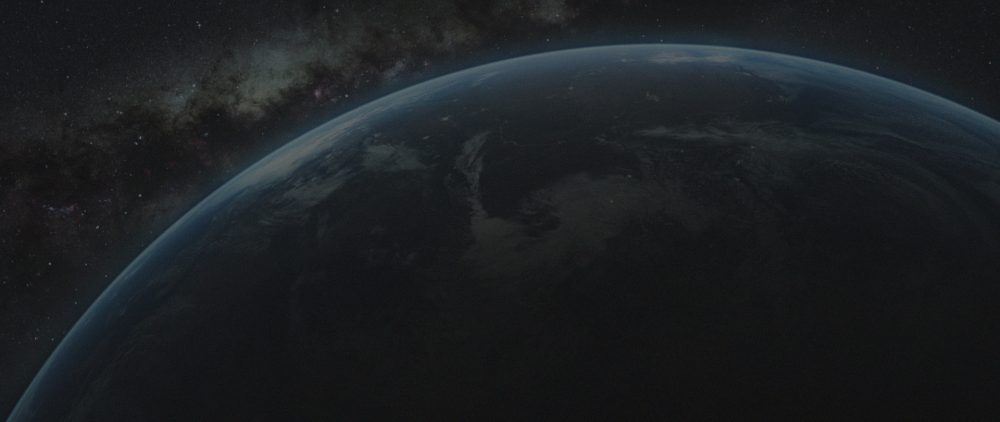FPV Drone Service
FPV = First Person View
Micro FPV Drone
FPV Drone Facility Tour
FPV Tour of Corporate Company
Dentist Office Fly Through
FPV Drone BTS Music Video
FPV Drone TBT Training Facility
FPV Racing Drone Reel
FPV Drone vs Cinema Drone
The world of aerial cinematography has witnessed a remarkable transformation with the advent of drones. Two popular types of drones used in this field are FPV (First-Person View) drones and cinema drones. Both offer unique capabilities, but understanding their key differences is crucial in deciding which one suits your needs best. In this article, we will explore the characteristics, use cases, and advantages of FPV drones and cinema drones, providing valuable insights to help you make an informed choice.
FPV Drones: Unleashing the Thrill of Aerial Acrobatics:
FPV drones, also known as racing drones, are designed to deliver an exhilarating flight experience while capturing breathtaking footage. These drones are built for speed, agility, and maneuverability, making them perfect for capturing dynamic shots from unique perspectives.
One of the distinct features of FPV drones is the real-time First-Person View. Pilots wear goggles that provide a live video feed from the drone’s camera, immersing them in a thrilling “pilot’s-eye” perspective. This allows for precise control and enables pilots to perform complex aerial maneuvers, including flips, rolls, and dives, adding an element of excitement to the footage.
FPV drones are favored by drone racing enthusiasts, extreme sport filmmakers, and action cinematographers due to their ability to capture fast-paced, adrenaline-pumping scenes. The compact size and lightweight construction of FPV drones also enable them to navigate tight spaces and capture shots that would be otherwise inaccessible to larger drones.
However, it’s important to note that FPV drones typically lack the advanced camera stabilization systems found in cinema drones, which may result in less smooth footage. Additionally, their limited flight time and range may restrict their application for longer shoots or aerial surveys. Nevertheless, for those seeking dynamic, high-speed shots, FPV drones are an excellent choice.
Cinema Drones: Elevating Cinematic Imagery to New Heights:
Cinema drones, on the other hand, are purpose-built aerial platforms designed to capture stunning, high-quality cinematic footage. These drones prioritize stability, image quality, and professional-grade features, making them the go-to choice for filmmakers, videographers, and photographers aiming to capture breathtaking aerial shots.
Cinema drones are equipped with advanced gimbal stabilization systems that ensure smooth and steady footage even in challenging flight conditions. This feature is especially crucial when capturing cinematic scenes that require precision and fluidity. Additionally, high-resolution cameras with adjustable settings allow for customization, ensuring the perfect shot in any lighting scenario.
Furthermore, cinema drones often offer longer flight times and extended ranges, making them suitable for covering large areas or conducting aerial surveys. They are also equipped with obstacle avoidance systems, GPS tracking, and intelligent flight modes, enhancing safety and ease of use.
However, cinema drones are generally larger and heavier than FPV drones, limiting their maneuverability and agility. It is important to consider the specific shooting requirements before opting for a cinema drone, as they may not be suitable for capturing high-speed action sequences or tight spaces.
Choosing the Right Drone for Your Needs:
Selecting the right drone depends on your specific requirements and the type of footage you aim to capture. Consider the following factors when making your decision:
1. Purpose: Determine the primary use of the drone, whether it’s for action shots, racing, or cinematic filming.
2. Maneuverability: Assess the need for agility and the ability to navigate tight spaces.
3. Image Quality: Evaluate the importance of smooth, high-resolution footage with professional-grade stability.
4. Flight Time and Range: Consider the duration and distance requirements for your shoots.
5. Budget: Take into account the affordability and maintenance costs of the drone.
Both FPV drones and cinema drones have their unique strengths and applications in the field of aerial cinematography. While FPV drones excel at capturing thrilling, high-speed action shots, cinema drones prioritize stability, image quality, and advanced features for professional-grade cinematic footage. By considering your specific needs and budget, you can make an informed decision that aligns with your creative vision. Whether you’re seeking adrenaline-pumping aerial acrobatics or breathtaking cinematic imagery, these remarkable tools offer endless possibilities for capturing the beauty of the world from above.
Add FPV Drone Sound Design to your Project.
As you may already know, the audio from the FPV drones’s camera is unuseable do to the propellers/motor sounds. This is not a problem at all, we can create a “Surround Sound” sound design that will mimic the FPV drones flight patterns. We can add enviroment ambience, sound effects and If there is a subject and/or object to the left/right of frame the audio would switch accordingly to that specific speaker. If the drone is passing and/or coming up to a subject/object you would here the surrounding audio in stereo according to the drones movements and enviroment. If you are a corporate company using this as a promo video or for your website this is a great opportunity to add in certain slogans, sales pitches, key sentences organically as the FPV drone flys by the subject’s vocalizing those certains keywords you would like for your potential clients to hear in your video.
FPV Racing Drone
Our super-fast racing FPV (First Person View) drone services allows the 4K cameras mounted to the front of the drones to give you a different perspective shot than the traditional UAV drones such as DJI Mavic 2s or Inspire 2s. Our FPV drones services allow the 4K cameras to get up close and personal with the action. The FPV drone is perfect for keeping up with race cars, drift cars, and bikes on the speed way as well as filming some serious action sports on the water.
What is the best camera rig to film a sporting event?
Here our a few good ways to utilize our FPV Drone Service:
- Basketball, Baseball, Soccer, & Football: Get unbelievable up close action shots of players without stepping foot on the field or court.
- Race Cars on the Speedway: The only drone that can keep up with the action.
- Extreme Sports: The FPV drone is the only camera rig that can keep up with the action and delivery unremarkable action shots when “its all said and done.”
What is the best camera rig for filming real estate?
The FPV micro drone service is perfect for getting real estate interior shots. The FPV micro drone is no bigger than the palm of your hand, equipped with a 4K GoPro Here 8 which allows for fluid/stabilized super wide angle shots. The drone’s propellers are shielded with soft plastic propeller guards for safety. This micro drone can go through doorways, windows, and in/out of rooms in one continuous shot to give a true virtual tour experience.
- The micro FPV drone is perfect for interior & exterior real estate virtual tour videos.
- Offering seamless continuous shots for true virtual tour experience.
- Super-wide angle to cover floor to ceiling in one shot.
- The FPV micro drone can go through and past very tight spaces such as small statues, plants and various decor elements to give off a very cinematic look.
What the best camera setup to use for a real estate interactive virtual tour?
Our micro FPV drone service offers a drone unit that fly’s with 360 camera attached to it! You get all the benefits of the micro FPV drone (as mentioned in the above paragraph), but now your viewers can actually control which angle of the shot they want to view with 360 degree interactive control. Perfect for showcasing the virtual tour on your website, Vimeo, Facebook and more…
Servicing the following areas:
South Florida: Palm County: Palm Beach Gardens, West Palm Beach, Wellington, Boynton Beach, Delray Beach & Boca Raton. Broward County: Deerfield Beach, Pompano Beach, Fort Lauderdale, Hollywood, Weston & Hallandale Beach. Dade County: Miami Gardens, North Miami Beach, Aventura, Key Biscayne, Kendall, Doral & South Beach Miami.
Central Florida: Orange County: Orlando, Kissimmee & Winter Park. Polk County: Lakeland, Haines City & Winter Park. Hillsborough County: Tampa, St Petersburg, Brandon & Clearwater.
South West Florida: Sarasota County: Sarasota & Siesta Key. Charlotte County: Port Charlotte & Punta Gorda Lee County: North Fort Myers, Cape Coral, Fort Myers Beach & Bonita Springs Collier County: Naples, Fl.
FPV Racing Action Drone Service Miami, Fl
Q: What are the benefits of using an FPV drone for capturing shots in film production?
A: FPV drones offer a range of benefits when it comes to capturing unique shots for film production. Let’s explore some of them:
1. Dynamic aerial tracking shots: FPV drones excel at capturing dynamic aerial tracking shots, where the drone follows a subject or action sequence from above. This allows filmmakers to achieve smooth, cinematic movements that add a sense of speed and excitement to their shots.
2. Low-altitude close-ups: FPV drones can fly at low altitudes, allowing filmmakers to capture stunning close-up shots. Whether it’s a close-up of a subject’s face, an object, or a scenic detail, FPV drones provide a unique perspective that would be challenging to achieve with traditional aerial filming methods.
3. Fly-through shots: With their compact size and agile flight capabilities, FPV drones can navigate through tight spaces and perform intricate fly-through shots. This enables filmmakers to capture immersive shots that take the audience on a thrilling journey through various environments, such as forests, buildings, or other confined spaces.
4. Dynamic chase sequences: FPV drones are perfect for capturing dynamic chase sequences, where the drone can closely follow and track moving subjects. This allows filmmakers to capture high-speed action shots, such as car chases or fast-paced sports events, adding a sense of intensity and immersion to the footage.
5. Point-of-view (POV) shots: FPV drones can be equipped with cameras that provide a first-person perspective, mimicking the viewpoint of a character or subject. This allows filmmakers to capture exciting POV shots that immerse the audience in the action, enhancing the storytelling and creating a more engaging experience.
6. Unique angles and perspectives: FPV drones offer the ability to capture shots from unique angles and perspectives that were previously difficult or impossible to achieve. Whether it’s a top-down shot, a bird’s-eye view, or a dynamic aerial perspective, FPV drones provide filmmakers with creative freedom to experiment and elevate their visual storytelling.
7. Time-lapse and hyperlapse shots: FPV drones can be programmed to capture time-lapse or hyperlapse shots, where the drone moves incrementally over a set period. This allows filmmakers to capture stunning footage of changing landscapes, cityscapes, or other time-dependent subjects, adding a visually captivating element to their films.
8. Smooth camera movements: FPV drones are equipped with stabilization systems that help achieve smooth camera movements, even during high-speed flights or challenging maneuvers. This ensures that the shots captured are steady and professional-looking, enhancing the overall quality of the footage.
From dynamic aerial tracking shots to low-altitude close-ups and unique angles, FPV drones offer filmmakers a wide range of opportunities to capture stunning shots that elevate their film productions. If you have any further questions or need additional information, feel free to ask!



